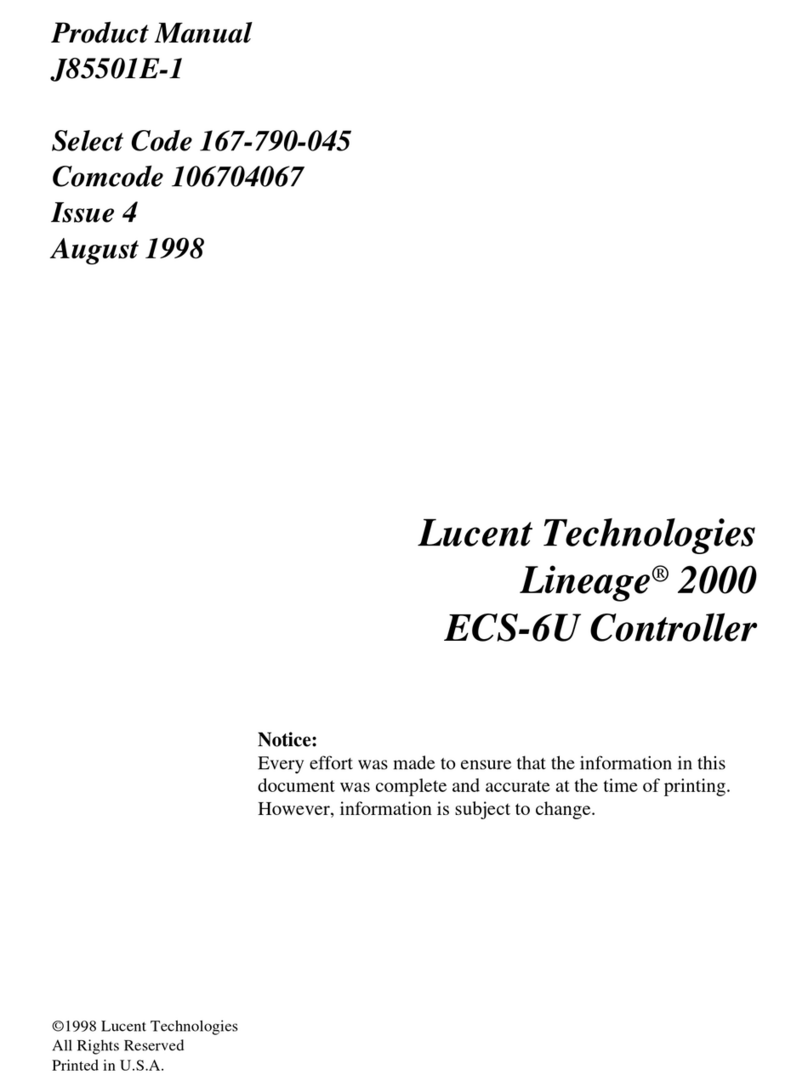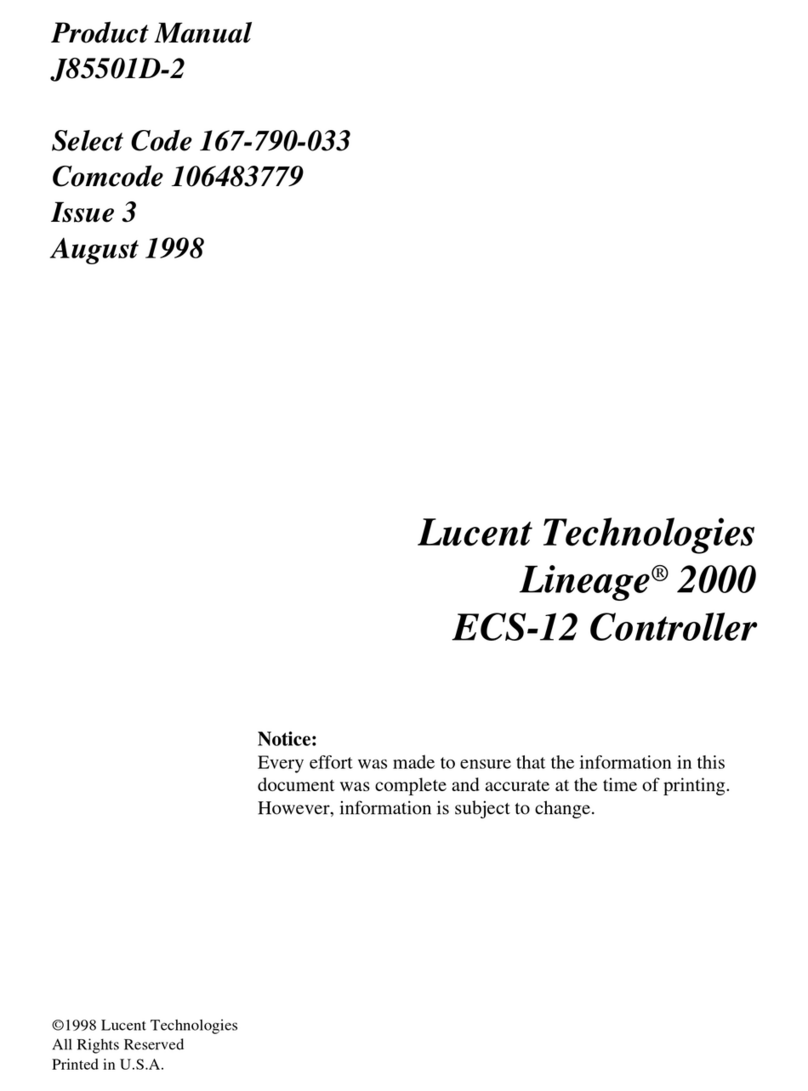
Lucent Technologies Lineage®2000 ECS-6 Controller J85501D-1
Issue 6 August 1998 Introduction 1 - 3
Customer
Training Lucent Technologies offers customer training on many Power
Systems products. For information call 1-972-284-2163. This
numberisansweredfrom8:00a.m.until4:30p.m.,CentralTime
Zone (Zone 6), Monday through Friday.
Customer
Service Forcustomers in the United States, Canada, Puerto Rico, and the
US Virgin Islands, call 1-800-THE-1PWR (1-800-843-1797).
Services provided through this contact include initiating the
spare parts procurement process for out of service emergencies,
ordering Lucent Technologies documents, and providing other
product and service information.
For other customers worldwide, call 001-972-840-0382. This
numberis answeredfrom8:00a.m. until4:30p.m.,CentralTime
Zone (Zone 6), Monday through Friday.
Technical
Support Technical support for Lucent Technologies customers is
available around the world during the normal product warranty
period and also while specific contractual agreements extend
this service.
For customersin the United States,Canada, Puerto Rico, and the
US Virgin Islands, call 1-800-CAL-RTAC (1-800-225-7822) to
contact a product specialist to answer your technical questions
and assist in troubleshooting problems.
For other customers worldwide, contact your local field support
center or your sales representative to discuss your specific needs.
Product Repair
and Return Repair and return service is provided for Lucent Technologies
customers around the world. For customers in the United States,
Canada, Puerto Rico, and the US Virgin Islands, call
1-800-255-1402 for information on returning of products for
repair.
For other customers worldwide, contact your sales
representative to discuss your particular circumstances.































